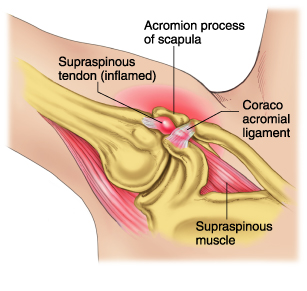Impingement syndrome is affecting the general condition of the shoulder joint, which is commonly seen in the elderly. The condition is closely related to shoulder bursitis and tendonitis of the rotator cuff. This can cause pain, weakness and loss of movement at the shoulder. The shoulder impingement syndrome has several names, which are used in medical terminology. It is also called subacromial impingement, painful arc syndrome, supraspinatus syndrome, swimmer’s shoulder, and thrower’s shoulder.
- difficulty turning the hand behind back
- pain when lifting the arm above head
- weakness of shoulder muscles
Diagnosis of Impingement Syndrome:
Treatment of Impingement Syndrome:
- Joint Mobilization
- Interferential Therapy
- Acupuncture
- Soft Tissue Therapy
- Therapeutic Taping
- Scapular and rotator cuff Strengthening
- Education regarding the cause and mechanism of the condition
Therapeutic injections of corticosteroid (limited to three) and local anaesthetic may be used for persistent impingement syndrome.







